Random Topic V3
Re: Random Topic V3
@ CS: Vampirism is useful sometiems, but you should cure yourself anyways, since it is dangerous to stay one.
Have you gotten a full set of Daedric armor yet?
Have you gotten a full set of Daedric armor yet?
"If none can know what lies ahead, then losing one's way is just human nature."~ Yoshimitsu
"Would you hear my desire? To take this foul blade, and use it to blot out the light forever!" ~ Ganondorf
"Would you hear my desire? To take this foul blade, and use it to blot out the light forever!" ~ Ganondorf
-

Godzilla Forever - Leviathan
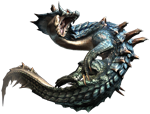
- Posts: 14715
- Joined: Sat Sep 05, 2009 3:19 am
- Location: In San Fransisco defeating the MUTOs.
Re: Random Topic V3
Not yet. And I already started the quest for the cure. I don't want to step into the day only to find myself slowly dying -_-

-

C S - Bae Fish

- Posts: 20156
- Joined: Sat May 19, 2007 11:34 pm
Re: Random Topic V3
Mmm... when I got Vampirism, I just restarted from my last save before becoming ill.
I'd assume you've already liberated Kvatch?
I'd assume you've already liberated Kvatch?
"If none can know what lies ahead, then losing one's way is just human nature."~ Yoshimitsu
"Would you hear my desire? To take this foul blade, and use it to blot out the light forever!" ~ Ganondorf
"Would you hear my desire? To take this foul blade, and use it to blot out the light forever!" ~ Ganondorf
-

Godzilla Forever - Leviathan

- Posts: 14715
- Joined: Sat Sep 05, 2009 3:19 am
- Location: In San Fransisco defeating the MUTOs.
Re: Random Topic V3
I'm way past that that. I got the disease when I got Mehrune's Razor. That was ages ago lol

-

C S - Bae Fish

- Posts: 20156
- Joined: Sat May 19, 2007 11:34 pm
Re: Random Topic V3
Ha! Just wait till you have to defend bruma. There's a time limit on that quest!
"If none can know what lies ahead, then losing one's way is just human nature."~ Yoshimitsu
"Would you hear my desire? To take this foul blade, and use it to blot out the light forever!" ~ Ganondorf
"Would you hear my desire? To take this foul blade, and use it to blot out the light forever!" ~ Ganondorf
-

Godzilla Forever - Leviathan

- Posts: 14715
- Joined: Sat Sep 05, 2009 3:19 am
- Location: In San Fransisco defeating the MUTOs.
Re: Random Topic V3
Don't worry, you should be able to get full Daedric armor by then. Getting Umbra makes the quest easier too.
"If none can know what lies ahead, then losing one's way is just human nature."~ Yoshimitsu
"Would you hear my desire? To take this foul blade, and use it to blot out the light forever!" ~ Ganondorf
"Would you hear my desire? To take this foul blade, and use it to blot out the light forever!" ~ Ganondorf
-

Godzilla Forever - Leviathan

- Posts: 14715
- Joined: Sat Sep 05, 2009 3:19 am
- Location: In San Fransisco defeating the MUTOs.
Re: Random Topic V3
Compy Scavenger wrote:Oh joy
Borderline spam.
Don't make me smack you.
- TyrannoTitan
Re: Random Topic V3
Must...resis urge... to see this...
Now, back to Grounded or Not?: A Pterosaur Mystery...
Once again, TT, we don't know for certain if Quetzalcoatlus and co. had the same membrane proportions as their smaller relatives. For all we know, they may have had only a bar mimimum of wing membrane...that, and getting off the ground for a 300+ pound Pterosaur would be incredibly hard, especially since Quetzalcoatlus and co. didn't exactly live in areas filled with cliffs, like Pteranodon and Pterodaustro...
Now, back to Grounded or Not?: A Pterosaur Mystery...
Once again, TT, we don't know for certain if Quetzalcoatlus and co. had the same membrane proportions as their smaller relatives. For all we know, they may have had only a bar mimimum of wing membrane...that, and getting off the ground for a 300+ pound Pterosaur would be incredibly hard, especially since Quetzalcoatlus and co. didn't exactly live in areas filled with cliffs, like Pteranodon and Pterodaustro...

All hail the glory that is Tenshi, the Sunkern!
-
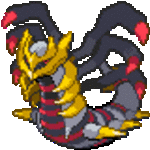
Giratina93 - Psuedo-Wyvern
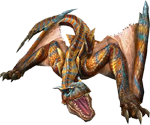
- Posts: 11587
- Joined: Sun Jan 04, 2009 9:47 pm
- Location: Studying the ancient art of perfection
Re: Random Topic V3
We don't know for certain they didn't have as much as the others either. Its just speculator.
Considering what their closest relatives are, I'd say there's more support in favor of them flying then walking.
Considering what their closest relatives are, I'd say there's more support in favor of them flying then walking.
- TyrannoTitan
Re: Random Topic V3
addressing your point on membranes: For them to be able to be sensitive enough to hear the faint sound of a twig snapping in the treeline, logically from a considerable distance, away from the treeline, they would be unable to withstand a screech loud enough to literally physically hurt a predator in said treeline. there is no mute button for your own voice. otherwise, how would you know what you were saying? since any sound you make is resulted by vibrations inside your own body, there is no way to nullify it.
also, the predator would NOT react to it 'like a physical blow' as you said. This is reality, not the Godzilla universe.
Also consider, Gira, that almost every known example of a flying creature that has lost it's ability to fly, has an alternative high speed method of mobility to compensate. in penguins it's swimming. in ostritches, it's running. I'm fairly sure a land-bound Quetzalcoatlus would not have had such mobility. longer legs alone are not enough. like I said earlier, if you were to wrap a horse or giraffe's legs with fabric, it would barely be able to move, robbing it of it's primary defense against predators [even WITHOUT the physical limitations, and relying on size in addition to speed, Giraffes are on the menu of several African predators, most notably lions. now imagine if you had a 42 foot long, 16 foot tall, 7 ton lion. yeah. you just drove a whole species of animals to extinction. great job, mate. Darwin would be proud]
also, on average, flightless creatures evolving from flying ancestors start out small and grow larger AFTER adapting to terrestrial life. Terror Birds weren't always that size. their flying ancestors, even when they first lost their ability to fly, would've been the size of pigeons. so to think that Quetzalcoatlus was terrestrial is, at best, a half-baked theory relying on very little solid evidence to back it up. narrow wings do not equal lack of flight. in fact, narrow wings help when gliding. take a look at Gulls. or if you want, sailplanes. high aspect ratios assist considerably in flight.
also, you state they lived in semi-arid landscapes. do you know how much wind is kicked up in a plain with moderately high temperatures? the thermals and draft alone would, with the right anatomical features, lift Quetzalcoatlus with little trouble. it's the same reason that windmills these days are placed in plains.
My next response, if I'm responded to before then, will be in about 2 hours. at present I'm in College and have a lecture to attend.
also, the predator would NOT react to it 'like a physical blow' as you said. This is reality, not the Godzilla universe.
Also consider, Gira, that almost every known example of a flying creature that has lost it's ability to fly, has an alternative high speed method of mobility to compensate. in penguins it's swimming. in ostritches, it's running. I'm fairly sure a land-bound Quetzalcoatlus would not have had such mobility. longer legs alone are not enough. like I said earlier, if you were to wrap a horse or giraffe's legs with fabric, it would barely be able to move, robbing it of it's primary defense against predators [even WITHOUT the physical limitations, and relying on size in addition to speed, Giraffes are on the menu of several African predators, most notably lions. now imagine if you had a 42 foot long, 16 foot tall, 7 ton lion. yeah. you just drove a whole species of animals to extinction. great job, mate. Darwin would be proud]
also, on average, flightless creatures evolving from flying ancestors start out small and grow larger AFTER adapting to terrestrial life. Terror Birds weren't always that size. their flying ancestors, even when they first lost their ability to fly, would've been the size of pigeons. so to think that Quetzalcoatlus was terrestrial is, at best, a half-baked theory relying on very little solid evidence to back it up. narrow wings do not equal lack of flight. in fact, narrow wings help when gliding. take a look at Gulls. or if you want, sailplanes. high aspect ratios assist considerably in flight.
also, you state they lived in semi-arid landscapes. do you know how much wind is kicked up in a plain with moderately high temperatures? the thermals and draft alone would, with the right anatomical features, lift Quetzalcoatlus with little trouble. it's the same reason that windmills these days are placed in plains.
My next response, if I'm responded to before then, will be in about 2 hours. at present I'm in College and have a lecture to attend.
"Ah yes, organised chaos. the sign of a clever but ever-busy mind. To the perpetrator, a carefully woven web of belongings and intrigue, but to the bystander? Madness!"
–William Beckett, Lore of Leyuna RPG

–William Beckett, Lore of Leyuna RPG

-

The Kingpin - Webmaster

- Posts: 22584
- Joined: Thu Jan 01, 1970 12:00 am
- Location: Kuwait
Re: Random Topic V3
Perhaps, Quetzalcoatlus and co. could tolerate very loud noises? And for the effect it would have on the T-rex, saying it woud act like it had recieved a physical blow was a bit over the top. More likely it would shake its head in pain, try to get at the giraffe-sized Pterosaur, give up due to the level of pain, before retreating...
Sure, Quetzalcoatlus and co. weren't able to run, but they could move rather fast on land, if their trackways are to be believed (Yes, we do have trackways from Quatzalcoatlus relatives...) Plus, why need to have a super-fast method of locomotion if your main way of getting rid of predators was giving them headaches...as well as riffling up nearby herbivores, which would react accordingly...
As for your evolution of flightlessness argument, there are exceptions to every rule. Perhaps, Quetzalcoatlus and co. are exceptions, and became flightless because they got so large... also, there's a world of diffrence of magnitude between a sea gull, and a Pterosaur with a 45+ foot wingspan...
As for the winds on the plains... I have no argument against that.
Now, on Haterg Island, all the dinosaurs there were dwarfs... especially the carnivores. Heck, during the time when Hatzergopteryx lived, the main predator on th eisland was so small, a Hatzergopteryx could down it in one gulp (And by that, I mean the two-clawed raptors). It wouldn't surprise me if Hatzergopteryx preyed on the mini-raptors as well as lizards, fish, and baby dinosaurs. I could imagine it standing still, in the shade of a tree, waiting for a raptor or two to pass by, before darting its neck out, and gulping it down easilly...
Sure, Quetzalcoatlus and co. weren't able to run, but they could move rather fast on land, if their trackways are to be believed (Yes, we do have trackways from Quatzalcoatlus relatives...) Plus, why need to have a super-fast method of locomotion if your main way of getting rid of predators was giving them headaches...as well as riffling up nearby herbivores, which would react accordingly...
As for your evolution of flightlessness argument, there are exceptions to every rule. Perhaps, Quetzalcoatlus and co. are exceptions, and became flightless because they got so large... also, there's a world of diffrence of magnitude between a sea gull, and a Pterosaur with a 45+ foot wingspan...
As for the winds on the plains... I have no argument against that.
Now, on Haterg Island, all the dinosaurs there were dwarfs... especially the carnivores. Heck, during the time when Hatzergopteryx lived, the main predator on th eisland was so small, a Hatzergopteryx could down it in one gulp (And by that, I mean the two-clawed raptors). It wouldn't surprise me if Hatzergopteryx preyed on the mini-raptors as well as lizards, fish, and baby dinosaurs. I could imagine it standing still, in the shade of a tree, waiting for a raptor or two to pass by, before darting its neck out, and gulping it down easilly...

All hail the glory that is Tenshi, the Sunkern!
-

Giratina93 - Psuedo-Wyvern

- Posts: 11587
- Joined: Sun Jan 04, 2009 9:47 pm
- Location: Studying the ancient art of perfection
Re: Random Topic V3
1) to tolerate noises loud enough to blow out other animals' eardrums and give them migranes, it would quite literally have to be deaf. sorry, but that's just the reality of it.
Keep in mind something that with that size and with limbs that long, it would have very long strides regardless of speed. i doubt the Quetzalcoatlus track fact is accurate, because otherwise there would also be a top speed for Quetzalcoatlus on the ground. a notable one. please revise your facts, and come back when you've got them and can provide sources. said sources must be at least 3, and not referencing eachother.
answering your question, the reason they'd need a fast method of locomotion is that you can go and give everyone headaches all you like. it'll just piss them off and make them stomp you until you can no longer give them headaches.
Exceptions to rules IF they're logically feasible. THIS 'exception' is neither logical, nor feasible. Also take into account that as of yet, few of these species have been found entirely. some bones and alot of guess work does NOT provide a sturdy foundation for theories.
You depend too heavily on an unlikely and groundless theory in your defence of the grounded pterosaur concept, which, might I remind you, would lead to them dying in numbers that would make them unable to survive. the only reason Quetzalcoatlus DIDN'T die was it's ability to keep well out of range of threats; flight.
Keep in mind something that with that size and with limbs that long, it would have very long strides regardless of speed. i doubt the Quetzalcoatlus track fact is accurate, because otherwise there would also be a top speed for Quetzalcoatlus on the ground. a notable one. please revise your facts, and come back when you've got them and can provide sources. said sources must be at least 3, and not referencing eachother.
answering your question, the reason they'd need a fast method of locomotion is that you can go and give everyone headaches all you like. it'll just piss them off and make them stomp you until you can no longer give them headaches.
Exceptions to rules IF they're logically feasible. THIS 'exception' is neither logical, nor feasible. Also take into account that as of yet, few of these species have been found entirely. some bones and alot of guess work does NOT provide a sturdy foundation for theories.
You depend too heavily on an unlikely and groundless theory in your defence of the grounded pterosaur concept, which, might I remind you, would lead to them dying in numbers that would make them unable to survive. the only reason Quetzalcoatlus DIDN'T die was it's ability to keep well out of range of threats; flight.
"Ah yes, organised chaos. the sign of a clever but ever-busy mind. To the perpetrator, a carefully woven web of belongings and intrigue, but to the bystander? Madness!"
–William Beckett, Lore of Leyuna RPG

–William Beckett, Lore of Leyuna RPG

-

The Kingpin - Webmaster

- Posts: 22584
- Joined: Thu Jan 01, 1970 12:00 am
- Location: Kuwait
Re: Random Topic V3
Compy Scavenger wrote:Not yet. And I already started the quest for the cure. I don't want to step into the day only to find myself slowly dying -_-
Do NOT wait or sleep outside. Ever.
You will wake up in flames.

"**** off TT"-Doc 42
Trophy art by CompyScavanger
Slow Posters Club
- Doc 42
- Cool Guy Moderator
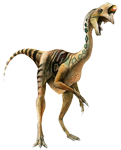
- Posts: 8618
- Joined: Fri Jan 05, 2007 9:20 pm
- Location: Ireland
Re: Random Topic V3
Burned flesh is crunchy and tastes well with ketchup. |3
"Gotta have a little sadness once in a while so you know when the good times come."
"Talent is a pursued interest. In other words, anything that you're willing to practice, you can do." ~ Bob Ross
"The future is always uncertain and painful but it must be lived." ~ Unknown
"Talent is a pursued interest. In other words, anything that you're willing to practice, you can do." ~ Bob Ross
"The future is always uncertain and painful but it must be lived." ~ Unknown
- Hopeflower
- Titanium Shortcake
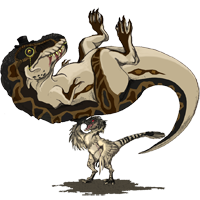
- Posts: 18702
- Joined: Mon Mar 12, 2007 7:17 pm
- Location: NY, USA
Re: Random Topic V3
best car to have when you're first learning is a square-ish one. something with a blunt front. makes it easier to get used to it's dimensions.
"Ah yes, organised chaos. the sign of a clever but ever-busy mind. To the perpetrator, a carefully woven web of belongings and intrigue, but to the bystander? Madness!"
–William Beckett, Lore of Leyuna RPG

–William Beckett, Lore of Leyuna RPG

-

The Kingpin - Webmaster

- Posts: 22584
- Joined: Thu Jan 01, 1970 12:00 am
- Location: Kuwait
Re: Random Topic V3
i now love apceros. i was playing freedom unite and i was doing the quest "the silver horn" and i had run out of supplies and the monoblos was charging me but thankfully i had startled a pair of apceros and the headbutted me and saved me from the charge and killed the white monoblos. 
- slashmaster101
- Bumble Bee
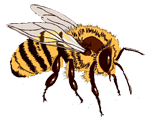
- Posts: 495
- Joined: Fri Mar 26, 2010 12:08 am
Re: Random Topic V3
Giratina93 wrote:As for your evolution of flightlessness argument, there are exceptions to every rule. Perhaps, Quetzalcoatlus and co. are exceptions, and became flightless because they got so large... also, there's a world of diffrence of magnitude between a sea gull, and a Pterosaur with a 45+ foot wingspan...
IINM the only way that would be logically sound, in evolutionary terms, would be if they got large enough that the size alone would be a defense to other large predeators, comparable to the sauropods.
And proportionally, I don't think there is.
Clarity of thought before rashness of action...
- Evil Eye
- Carcharodontosaurus

- Posts: 3826
- Joined: Sat Jul 12, 2008 11:30 am
Who is online
Users browsing this forum: No registered users and 29 guests
Powered by phpBB © 2000, 2002, 2005, 2007 phpBB Group
SoftWood design by Free Forum
Time : 1.550s | 11 Queries | GZIP : Off
SoftWood design by Free Forum
Time : 1.550s | 11 Queries | GZIP : Off

